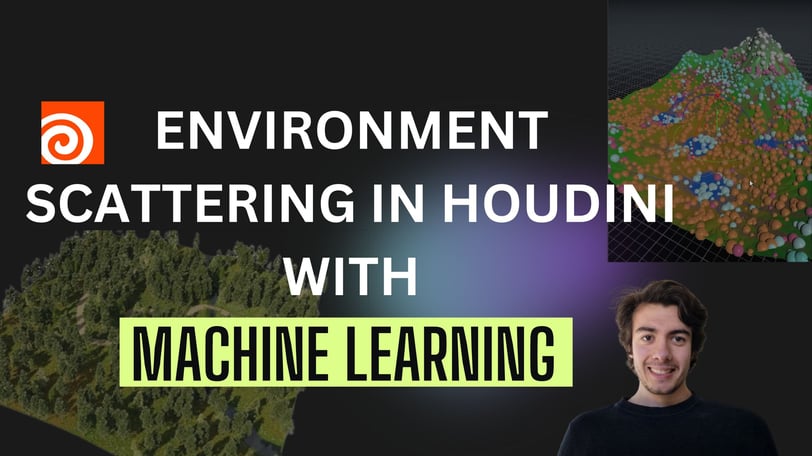How to do Environment Scattering in Houdini with Machine Learning?
BLOG


The usage of real forest data for scatter environments can revolutionize the way environment artist generate their scatters, offering unprecedented realism and depth in digital environments. By leveraging real forest data, we can now populate vast digital landscapes with 3D scatterings that mirror the complexity and diversity of natural forests. Machine learning accelerates this process, allowing for the rapid generation of these environments with stunning accuracy and detail.
This method can quickly generate diverse forest ecosystems that accurately reflect real-world complexity and variability. Once the model is trained, environments can be created much faster than traditional procedural methods, potentially reducing production times. And it's making the process more accessible to artists without extensive technical backgrounds in procedural generation.
My latest YouTube tutorial takes you on a deep dive into how this innovative approach is setting new standards for creating immersive, realistic 3D environments. We explore how machine learning can harness the power of real forest data to create stunningly realistic 3D forest scatterings. Whether you're a seasoned VFX artist, a game developer aiming for the next level of environmental realism, or a machine learning enthusiast curious about practical applications, this tutorial is designed with you in mind.
While Houdini's procedural generation offers unmatched control and flexibility for creating detailed environments, it demands a high level of expertise and can be labor-intensive. The machine learning approach, empowered by real forest data, offers a compelling alternative, particularly for projects requiring large-scale, realistic natural environments. This method promises increased efficiency, scalability, and realism, making it an exciting option for the future of environmental VFX. However, the choice between these methods will depend on the project's specific needs, including the level of detail required, production timeline, and available resources. The integration of machine learning into traditional workflows, like those in Houdini, may offer the best of both worlds, leveraging the strengths of both approaches.
Check out the full YouTube video here(and be sure to subscribe to my channel).
Enjoy this? Share the post with others, and subscribe to my newsletter https://oriolmanzano.com/newsletter
